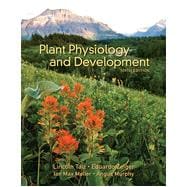Plant Physiology and Development

Plant Physiology and Development
- ISBN 13:
9781605352558
- ISBN 10:
1605352551
- Edition: 6th
- Format: Hardcover
- Copyright: 10/15/2014
- Publisher: Sinauer Associates is an imprint of Oxford University Press
Rent
Sorry, this item is currently unavailable on Knetbooks.com




